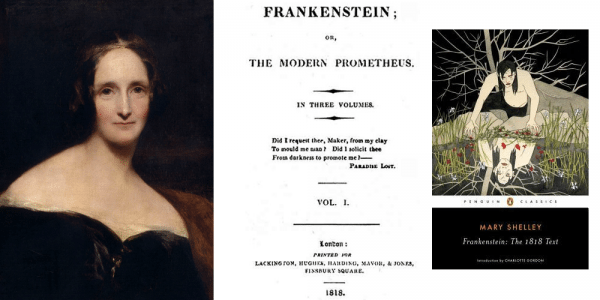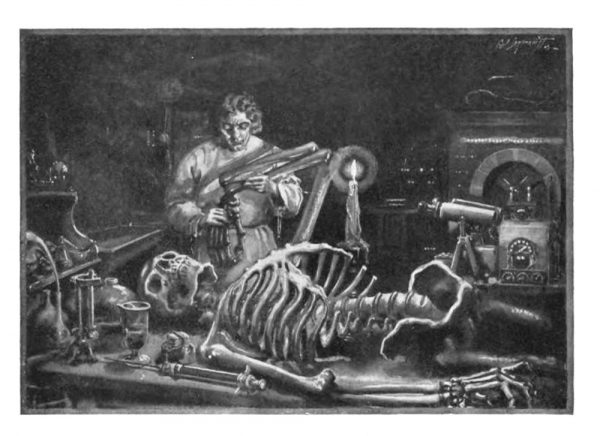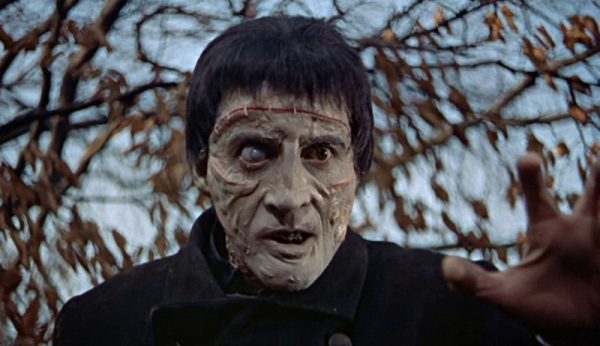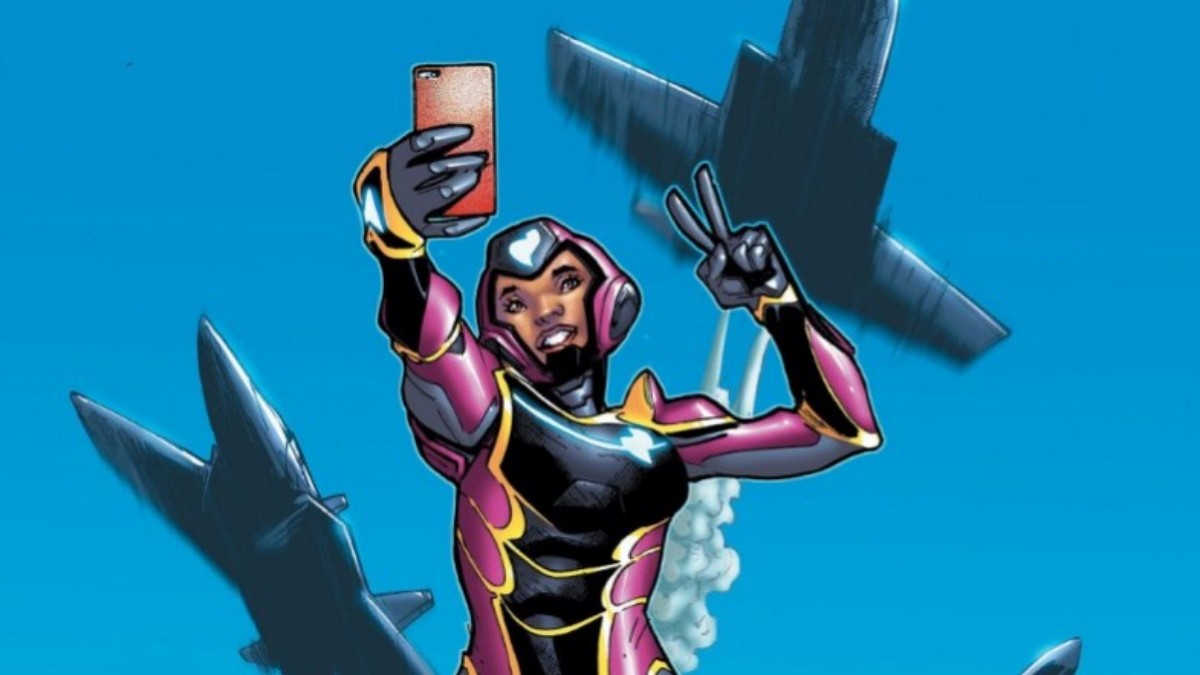
Two hundred years ago, Mary Shelley released a monster into the world: Frankenstein. On January 1, 1818, her novel was first published (albeit anonymously) and available to the general public. Frankenstein, or the Modern Prometheus, is now a classic for good reason. Fast forward to modern day and it is still relevant in our current social environment. Shelley’s concepts were reflective of a changing age, but presented in a fresh look, sparking a new genre and movement in the creative world. It seems fitting to start our new year with a celebration of 12 ways Mary Shelley created a Literary Monster.
-
Writers: Turning a Parlour Game into a Classic Novel
Let’s start at the very beginning: Frankenstein arose from a ‘parlour game’. So, for every aspiring writer reading this article, know that YOU can write a classic world-famous never-out-of-print novel from ANYTHING. Even that Doctor Who storytelling dice game you received from your sister-in-law. The exact setting was a villa at Lake Geneva, with her soon-to-be husband Percy Shelley, her step-sister Claire Clairmont, Lord George Gordon Byron, and Doctor John Polidori. It was the Year Without a Summer (1816), and to help pass the time, the group took it in turns telling the ultimate ghost stories—as a sort of parlour game.
-
The Poster-Boy for Gothic Literature
The whole purpose of the parlour games was to scare the bejeebus out of the companions. This alone is everything the Gothic genre is known for. And to be totally honest: Mary nailed it. Her creation became a defining feature of any Gothic-genre discussion, distinguishing it from the more general classification of Horror. Frankenstein is more than horror; it is a story filled with anticipation and questions, knowing you should run away but compelled to come closer to the monster to learn more. As Neil Gaiman so eloquently put it:
Gothic world is not a random world that means you harm. Gothic world has a brain behind it. The gothic world has a mind. The gothic world is moving slowly and, really, you should come away from a good piece of gothic experience just feeling that the world is a more misty, more dark, more threatening place perhaps. But still one that is capable of being understood. There is no random chaos and slaughter in a gothic, from my perspective.

-
The Birth of Monster Literature
While Gothic Literature was not a new thing for Mary, her creative genius subsequently gave birth to a new sub-genre: Monster Literature. Using the same thriller and emotional elements of ‘goth-lit’ while adding the horror through visual features, Mary initiated a new format of characterization through monsters. Not just any monsters, like those of myths and legends. We’re talking the complete anthropomorphic personification of all our social and personal fears in the most confronting way possible. After Frankenstein, society had to face Dracula, Jekyll and Hyde, Dorian Grey, and the Werewolf.
-
Mother of Science fiction: Biology
As if that wasn’t enough, Mary is also credited with writing the first ever science-fiction novel, with its own sub-genre: Science Horror. Mary Shelley was the first to fully integrate contemporary biological research with horror. While she was still creating her contribution to the parlour game, Mary was also in deep discussion with her companions about Galvanism—a new theory at the time, using electrical currents to create movement in the muscles. It was this debate about “the spark of life” which became a primary feature of Frankenstein. With her research, detailed discussion in the book, and imaginative speculations on where Galvanism could take us in the future, Mary is seen by many as the Mother of Science Fiction.

-
Wait… Was she also a Science-Fiction/Weather Reporter?
It is really no surprise to see weather featured so heavily in Frankenstein. The novel was first conceived during the Year Without a Summer and there were drastic weather changes all over the world due to a volcano eruption in Indonesia in 1815. For Mary, her original plans were to hike mountains and sail boats on Lake Geneva during the Summer of 1816. Instead she found herself huddled in blankets around the fireplace, talking about the power of Mother Nature and whether it could ever be harnessed for the use of humans. Do our actions directly impact our environment? What are the consequences of our interference with Nature? The subtle undertones of the story are the echoes of many who, at the time, were afraid of the never-ending winter and subsequent climate change.
-
Religion vs science
Following on from the discussions of weather and our environment, the undertones of ‘religion vs science’ are far less subtle. Frankenstein reflects the deeply felt concerns of an age conflicted over religion and science. The novel explores the boundary between life and death, and the potential dangers human arrogance might arouse when trying to “play God”. It was unprecedented for a woman to even consider let alone publish such debate as this; Mary’s soon-to-be husband Percy was expelled from college for writing about the potentials of atheism. However, Mary had found a way to encourage critical thought about the position of God in our evolution in a slightly more acceptable manner.
-
Romanticism vs. Enlightenment
Once you start the debate on ‘religion versus science’, it is only a matter of time before you consider Romanticism and Enlightenment. As a writer and artist, Mary’s first call would be towards Romanticism: inspiration, creativity, emotions, love, dreams, and nightmares. Even scientists could follow Romanticism and their interests in the life and earth sciences (like, say, biology). All of this fuels the creative writer. On the counter-side, Enlightenment argues in favor of reason and logic, with absolute truth being the governing force of everything. Frankenstein’s monster was the embodiment of both. He seeks independence and autonomy, through the creation of a mate and the recognition of individual identity. However, he is still pushed by his emotions, angered and hurt by the rejection of his creator.
-
The Appearance of a New Trend
One of the most relatable elements of this story is the pain of rejection; particularly the rejection of Frankenstein’s monster by his own creator. It hurts when he is rejected by the De Lacy family but that pain and fear is nothing compared to the rejection by his own creator. In a society still so dependent on physical appearances, Mary writes about a dark truth that sits within us all: our own reaction to that which is different to us. When Frankenstein reacts to his creation with “breathless horror and disgust,” Mary is voicing our own fears for our value in the community. She wasn’t the first to write about it (and certainly won’t be the last) but her novel captures it so perfectly, we still reference “Frankenstein’s Monster” as a specific visual cue in our contemporary writing today.

-
The Role of Frankenstein’s Bride
Despite all of the above points, few people acknowledge the feminist writing in Frankenstein. In the absence of strong female characters, the focus falls on the perception of females through the eyes of the male characters; particularly looking at the fear of females, as expressed by Victor Frankenstein himself. When the Monster demands Frankenstein make a female mate for him, there are two great powers that terrify him. At first, he panics about the idea of them mating and creating offspring. The power of woman to carry forth and give birth to a new generation of monster is almost enough to halt the entire process. What pushes him over the edge is the thought of the female monster rejecting both Frankenstein and his original creation, and thus leaving to have a life of her own. It is this idea that seals the deal. Frankenstein cannot handle the idea of a female monster now being so advanced, she would look upon her creators and say, “What the Hades were you thinking?” before running off to a much better life. And who would blame her? Considering how Frankenstein treats the original creation, who would hang around for more of that? The thing is, Frankenstein sees his original creation as far more dependent on a mate or companion, while comparatively he sees a potential female creation with the power to leave, grow, and evolve beyond her male counterpart. Mary did not abandon her feminism with the absence of strong female characters; she continued the revolution, expressed within our ever-growing potential.
-
Who is the Real Monster in Frankenstein?
Let’s make one thing abundantly clear. The Monster is not named Frankenstein. Mary Shelley never names the Monster at all, let alone named him Frankenstein. If you call the Monster “Frankenstein” then you are showing your ignorance of the story and should get thee reading post haste!
However, you can correctly consider Dr. Victor Frankenstein to be a monster (big monster but, little ‘m’) in this story. When I opened up the discussion with my fellow GeekMom writers, Lisa shared one of her favorite comments about the story:
“Those who read Frankenstein know Frankenstein is NOT The Monster.
Those who understand Frankenstein know Frankenstein is the real monster.”
Say it with me: “Victor is the true monster.” He is the one who recklessly created life and took no responsibility for it whatsoever. Victor is the one who runs from his responsibility. He is the one who manipulates the situation to protect his own interests, rather than taking responsibility for his actions. In writing Frankenstein, Mary has created a life-long debate on the representation of her characters and how we view ourselves.
-
Identity is So Important
And just in case you are still caught up on the last point, The Monster is not named Frankenstein. He can never be named Frankenstein. Mary made the very concerted effort to NOT name the Monster because the absence of identity was part of the problem. Without any sense of self-identity or emotional bonds, the Monster has forever a barrier between him and the rest of society. By granting a name to the Monster, you are instantly overcoming one of the psychological burdens which contributes to his monstrosity. Even if you call him “Frankenstein” because you think he is the son of Victor Frankenstein, you are granting the Monster identity and missing the point of the story: the journey of self-awareness and responsibility for our own growth.
-
Parenthood is Terrifying
If you are adamant about the familial relationship between Frankenstein and the Monster, then you will also recognize the parenting themes throughout the book. In fact, the abandonment of the Monster by Frankenstein is comparable with the abandonment of Mary and her baby by Percy, soon after birth. Their first child together was a daughter, who died at two-weeks… around the same time Percy took off for a fling with Mary’s step-sister. There are plenty of issues here about abandonment, parental bonds, dependency. And especially that feeling we all have when we think about how our actions directly impact the type of person our children will become. Yeah, if you haven’t thought about that at least once, you’re lying to yourself. I now keep a copy of Frankenstein to give to every new parent on the birth of their first child; parenthood is terrifying and we should all be terrified together.
If you have ever wondered what makes a novel become a classic, pick up Mary Shelley’s Frankenstein and read with care. Read the story as just a story. Read the story as an analogy for parenting. Read the story as the very first example of a young woman, setting the benchmark for so many writers to follow. But what makes it a classic is how you can relate to a story today as much as when it was first published. Even 200 years ago today.
Happy Anniversary, Frankenstein.



